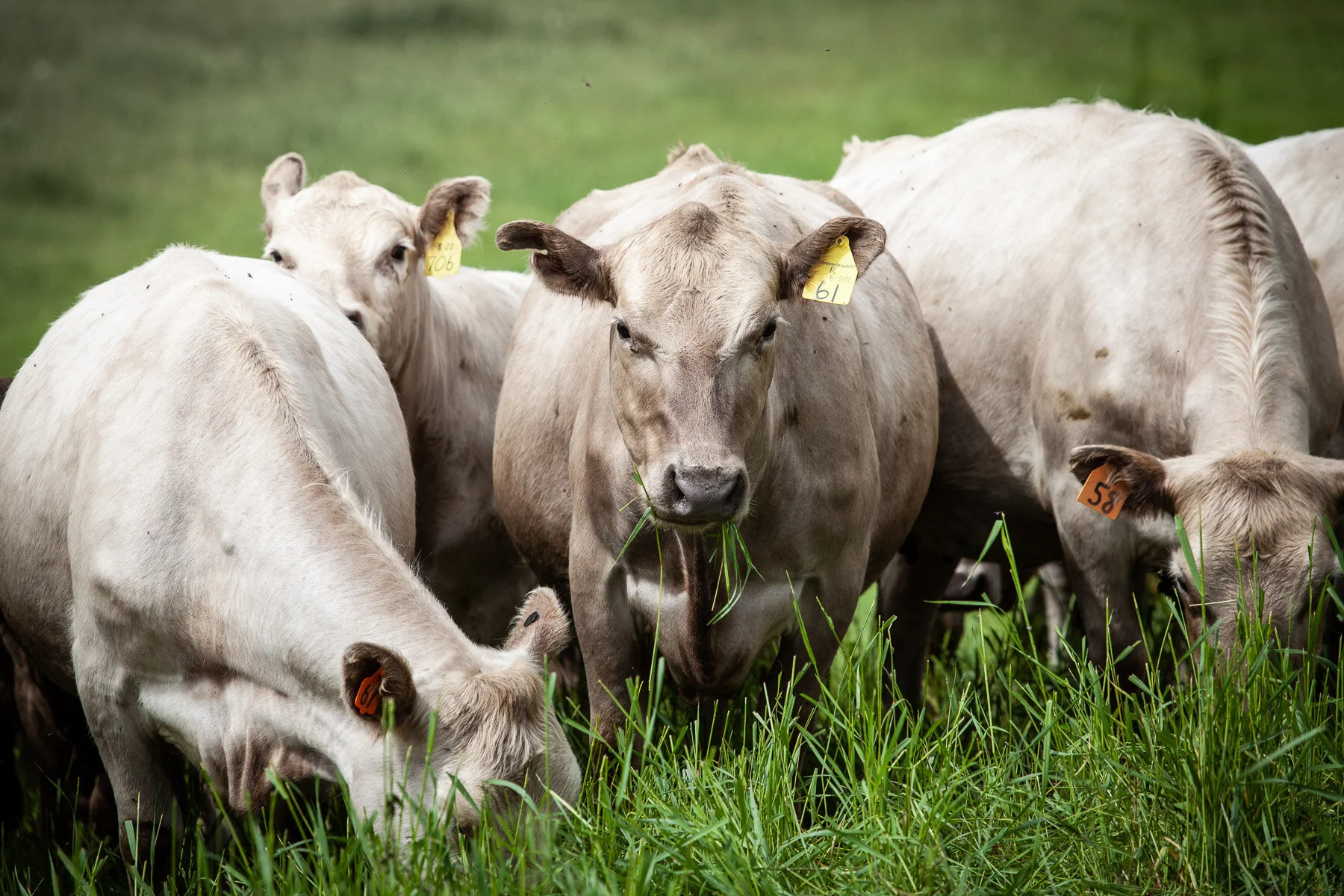Discovering Murray Greys
Haly came upon the Murray Grey breed of beef cattle while attending a pasture walk (farm tour) on a grass-based farm in southern Wisconsin prior to moving back to the family farm. Haly remarked that “They were some of the fattest cattle that I had ever seen being raised solely on forage from pasture.” So when it came time for us to choose a beef breed for our farm, Murray Greys seemed an obvious first choice.
History of the murray grey breed—An Australian origin
From the American Murray Grey Association and the Murray Grey International Association websites:
According to the Australian legend, the first Murray Grey was born on the Thologolong property of Peter and Ena Sutherland along the Murray River in New South Wales, Australia, in 1905, to a light roan Shorthorn cow and an Aberdeen Angus bull. The legend goes that this one cow gave birth to 12 off color calves, from which Mrs. Helen Sutherland, cousin to Peter, developed the breed as these grey cattle were found to grow unusually quickly, were superior converters of feed to muscle, and produced quality carcasses. This caught the attention of local cattlemen who soon became interested in the Greys and also began breeding them. It was late in the 1940s when awareness was gradually emerging that these grey progeny were something special. When they topped the Newmarket sales with a record price, it was decided they should have a name. It was suggested that as they came from the Murray region and they were grey colored that they should be called “Murray Greys.” By the 1950s, Murray Grey cattle in Australia were gaining a much wider reputation for high quality beef and butchers began paying a premium for them. The Murray Grey Beef Cattle Society of Australia was formed in 1964 to archive the pedigrees and to promote the breed. (Today, Murray Greys are the third largest cattle breed in Australia.)
In the late 1960s, American cattlemen were desperate to find larger, more efficient animals than those which the purebred Angus, Hereford and Shorthorn producers were offering at the time. To fill this need, American stockmen imported many dual-purpose draft and dairy breeds from Europe as well as Murray Grey cattle from Australia. The first Murray Grey semen was imported into the US in 1969 and the first live animals followed in 1970. The American Murray Grey Association was founded in September of 1971.
The early Murray Grey breeders in the United States resisted the industry trend to select only for frame size and worked to retain the docile temperament, calving ease, feed efficiency, and carcass quality for which the cattle were so highly regarded in Australia and New Zealand. After an initial rush of interest in the 1970s, the smaller frame size and lighter carcass weights pushed the Murray Grey breed to the sidelines of the American cattle industry. A dedicated group of Murray Grey breeders across the country defied the industry trends and continued to breed these easy-calving, efficient cattle with excellent eating qualities.
During the last decade of the 20th century, breeders began producing Murray Greys that were of sufficient frame size to be commercially acceptable. During this same period of time, American consumers began to develop an interest in grass-finished beef as a heart-healthy alternative to fish and chicken. The Murray Grey was uniquely poised for this new market opportunity with their inherent ability to efficiently use pasture and to consistently finish Choice on grass.
Renowned for their ability to ‘marble’ and without excess subcutaneous fat, the breed has become popular for both grass fed and feed lot production of beef for the Japanese and Asian market and for Australian domestic use.
Some of our favorite girls grazing on grass
Characteristics of the breed
From the American Murray Grey Association website:
Murray Grey cattle can range from "light silver" through various shades of "dun" to black. The dun color may range from light tan to chocolate brown. To be true to their breeding, Murray Greys must have dark skin color and pigment as seen around the eyes, on the muzzle, and on the hooves. Murray Greys are polled (naturally will not develop horns). Murray Greys are refined of bone allowing them to deliver much higher dressing percentage and cutout than other breeds. All Murray Grey cattle are to be of "moderate" size, with enough length and thickness to be well-balanced and proportionate.

